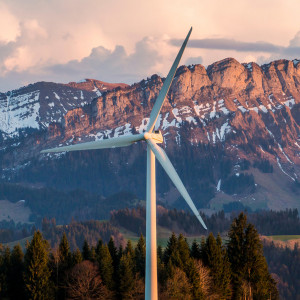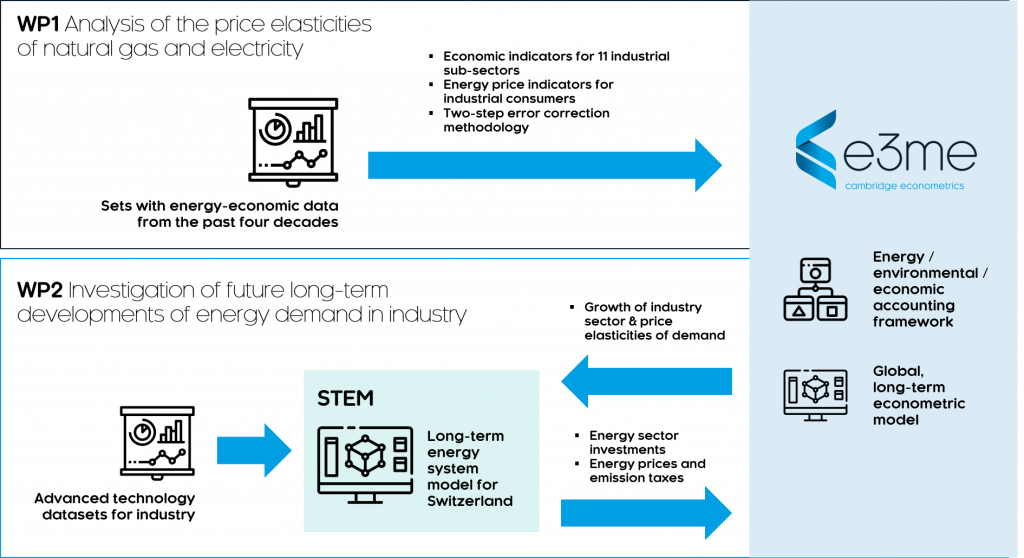Switzerland’s energy system: How E3ME worked with STEM, the Swiss energy system model

Commissioned by the Swiss Federal Office of Energy (SFOE), Cambridge Econometrics worked together with the Swiss Paul Scherrer Institute (PSI) to study the link between energy pricing and the energy consumption of electricity and natural gas in Switzerland. Dora Fazekas explains how this research was conducted and how a novel application of Cambridge Econometric’s E3ME model provided fresh insights for Switzerland’s energy system.
The project combined the global macroeconomic model E3ME and the Swiss energy system model (STEM) to conduct a multi-scenario analysis scoping exercise on the Swiss industry with a special focus on demand elasticities. Due to the multi-faceted approach to the exercise, an energy-econometrics accounting framework was combined with a techno-economic modelling approach. We relied on the scientific literature and data provided by SFOE and the International Agency IEA.
Linking STEM and E3ME
The two models from Cambridge Econometrics and PSI were combined together, to add inputs to the E3ME model:
- Existing time series data for Switzerland already collected, harmonised and maintained within E3ME
- Energy sector investments, energy prices and emissions taxes provided by STEM, a long-term energy systems model.

Figure 1 – Project methodology and linking the models
The researchers worked out possible scenarios for future development up to the year 2050:
Scenario 1 – building on Switzerland’s Energy Strategy 2050.
Scenario 2 – building on the climate strategy of Switzerland, with the goal of achieving net-zero greenhouse gas emissions by the middle of the century.
Hard to decarbonise sectors face challenges
The analysis concluded that the demand for electricity in Switzerland remains largely stable or even grows with the energy transition. The project recommends the promotion of efficient use of electricity in industry and at the same time to maintain incentives to replace fossil fuels with electricity-based technologies. A broader roll-out of electricity-based technologies such as e-mobility, deployment of heat pumps is essential for decarbonisation of the Swiss energy system. Limiting the total amount of electricity consumed could be counter-productive and may lead to less cost-optimal emission decrease.
This combined approach of the E3ME and STEM models led to a significant insight that otherwise could not have been achieved. Sectors least responsive to price changes are those that are most difficult to decarbonise – for example, the Iron and Steel sector.
By contrast, in the ‘non-metallic minerals’ and ‘paper and pulp’ sectors, we find that energy demand is more elastic since firms in these sectors are more responsive to a change in energy price.
Previous Cambridge Econometrics studies with E3ME modelling shed light on this phenomenon and is well understood within decarbonisation policy development. Explicit modelling of technological transformation using our FTT tool within the E3ME model is an important component of understanding how demand might react to changes in future prices.
Click here for the project webpage and here to follow Cambridge Econometrics on LinkedIn for the latest news and collaborations.
